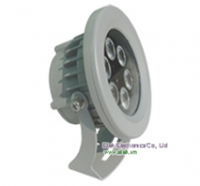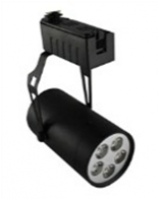Top News
Mr. Nguyen Quan Chinh, Vice Chairman, People's Committee of Quang Tri Province came to visit the site of LED installation.
The First Wind Powered LED Street Lamp
Bye the end of the year, there could be as many as ten lamps on Juist and other orders are coming in.
“Due to the wind-data we anaylized, we assume there is a market for about 3000 lamps across coastal areas in Northern Germany,” said Wätjen.1
The city of Oldenburg in Holstein, plans to install a dozen this fall and another lamp is going to Stipsdorf, Segeberg.
“Every place that has little sunshine but wind is suitable for the Proceed 1 windgenerator. Other than from places in Northern Germany, we have direct enquiries from places in Sweden and the Netherlands, Spain and Canary Islands, Southamerica (Chile, Argentina), Iran, Southafrica and Namibia,” said Wätjen.

In their sales brochure, it says:
“Think of rural and structurally weak regions in our vicinity and all over the world: Unlit bike- and footpaths between villages and small settlements; wide areas in Africa, South America and Australia, which are, if at all, supplied with loud, smoky fuel generators. Where else: airstrips in the outback, shelters in the mountains, the Lodge on the desert island. There are many alternative solutions for interior lighting, but as a German saying goes: at night it‘s just darker than outside. Unless you have a PROCEED 1 that illuminates the darkest night self-sufficient and quiet as whisper.”
Schleswig-Holstein based designer Peer Langemak and his Noordforce team spent a year developing their product, after discovering that many remote villages still lack adequate lighting.
A similar product, combining wind and solar energy, is in use in Spain’s Catalonia region.
Wätjen said solar is not a good solution in Northern Germany because “there is rarely enough sunshine during daytime to power solar cells.”
Wind powered street lamps costs less than €4,000 and do not require grid connection.
Source: The Eco-Report.com
Newer articles
- Da Lat: LED Lighting Application in Chrysanthemum Growing (21/04/2016)
- HCM City to Promulgate 2016–2020 Plan for Energy (18/04/2016)
- Da Lat: LED Lighting Application in Chrysanthemum Growing (18/04/2016)
- How to convert US to 100 percent renewable energy (14/04/2016)
- Google to Provide Seed Funding for Renewable Energy in Asia (14/04/2016)
Older articles
- First all-electric double-decker buses roll out in London (05/04/2016)
- Hydroelectricity in Central Area Facing Serious Drought (05/04/2016)
- Power sector to face water shortage as dry season coming (05/04/2016)
- Binh Thuan to Have the First Solar Power Plant (06/03/2016)
- Vietnam to compete in Shell Eco-Marathon Asia 2016 (06/03/2016)
Devices
Energy Audit
ONLINE
(0909.901.045)
| MOU SIGNING CEREMONY ABOUT SPECIAL LED WITH COB TECHNOLOGY FOR FISHING SHIPS BETWEEN QUANG TRI PPC AND NEDO |







































